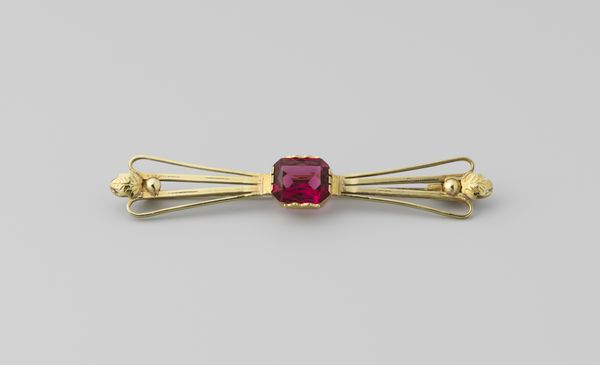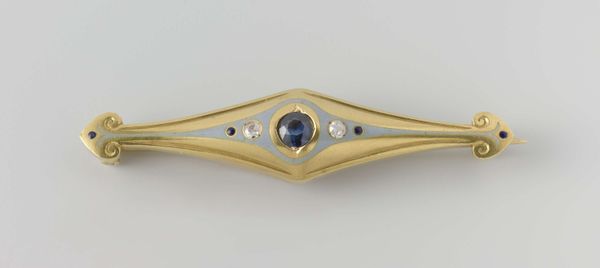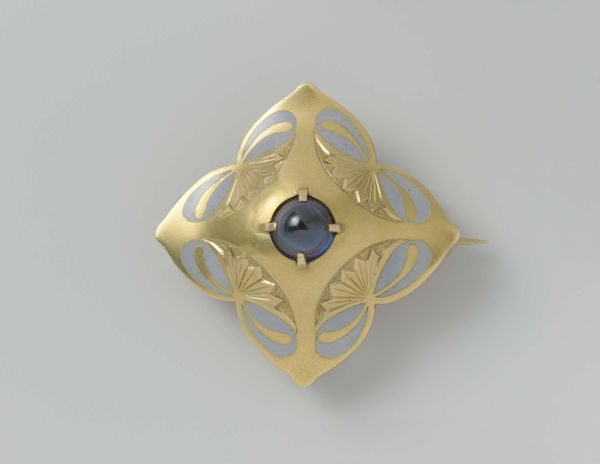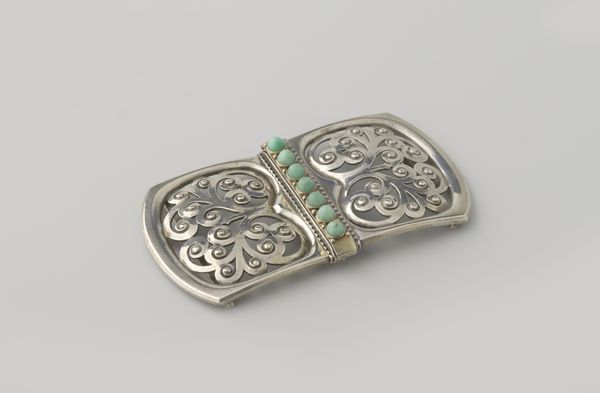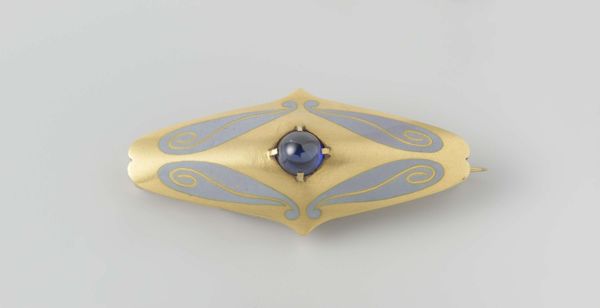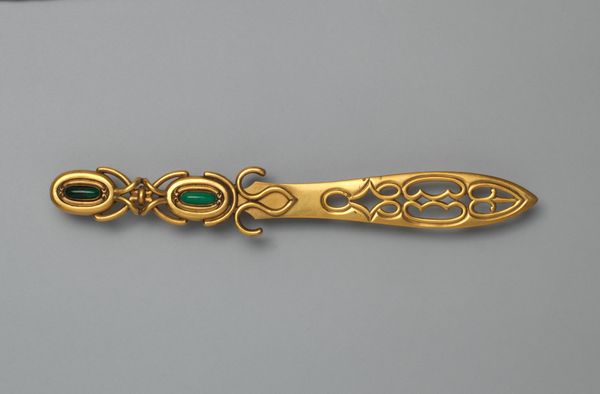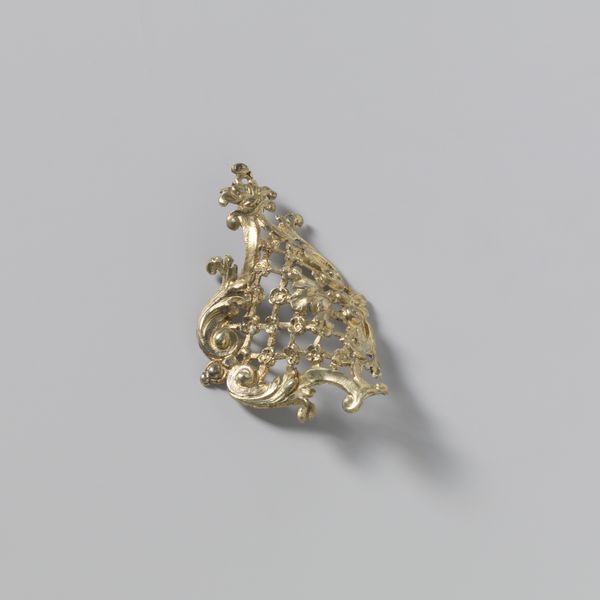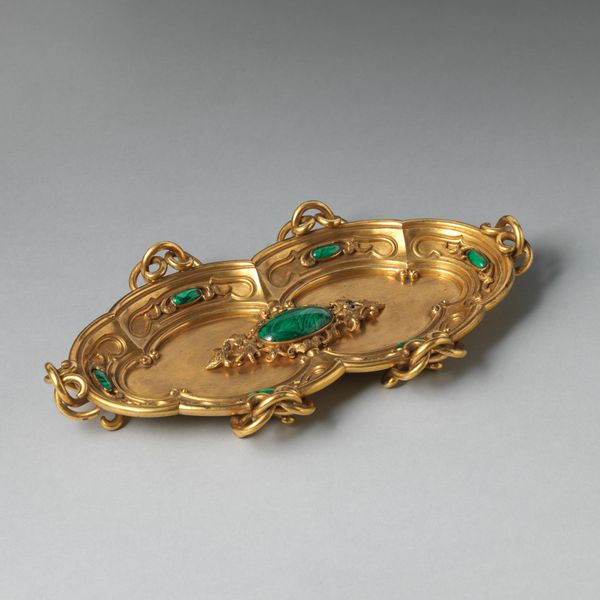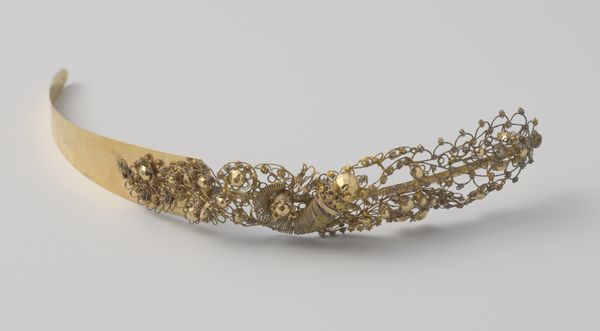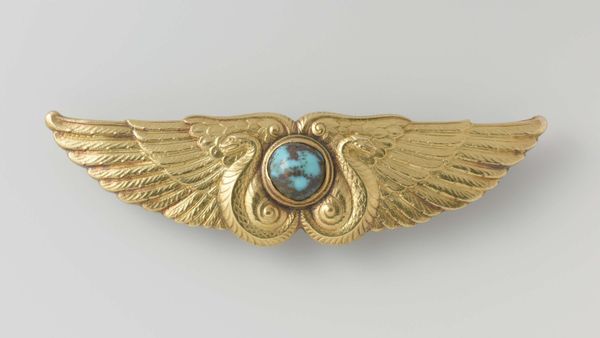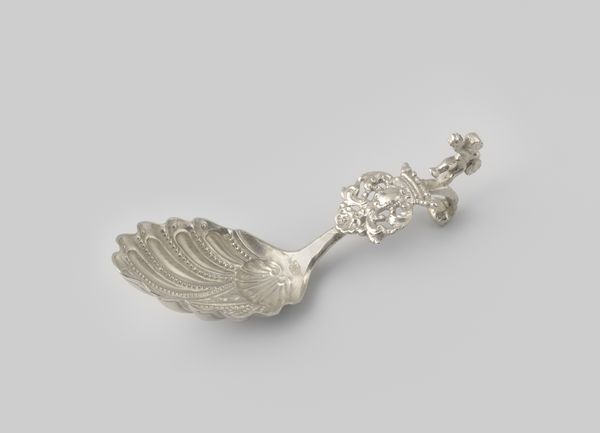
#
circular oval feature
#
wedding photograph
#
3d printed part
#
plastic material rendering
#
jewelry design
#
virtual 3d design
#
round design
#
3d shape
#
3d digital graphic
#
metallic object render
Dimensions: height 1.8 cm, width 6.5 cm, depth 0.8 cm, weight 6.4 gr
Copyright: Rijks Museum: Open Domain
Curator: Looking at this, I immediately think "flapper era." The clean lines, the geometric sensibility softened by those little curls... Editor: Exactly! What we have here is a brooch, "Brochette van goud met groen glas" – or "Brooch of Gold with Green Glass" – made sometime between 1931 and 1949 by H.A. Adamse. Curator: The glass, with its angular cut, provides such a striking contrast to the gold filigree. How was something like this made? Editor: Probably using techniques like die-casting and then hand-finishing the details. The making of jewelry like this in the interwar period was becoming more streamlined but still relied heavily on skilled labor. You can see the traces of human craft even within what might seem like an industrialized process. Curator: I'm curious about who would have worn this and when. It's clearly meant to be decorative, maybe for evening wear? Jewelry like this tells a story about the changing social landscape, doesn't it? New roles for women, greater accessibility of fashion... Editor: Absolutely! Jewelry was becoming increasingly tied to notions of individual expression, even democratized in some ways through new modes of production and availability of materials beyond precious gems and metals. It speaks to aspirations of beauty and belonging. Curator: Seeing something so delicate, crafted in a period defined by so much industrialization and global conflict, highlights the quiet rebellion found within craft. It provided respite. Editor: Precisely. And let's not forget the materials themselves – gold, glass – and how they were sourced and circulated, connecting local aesthetics to larger global networks of trade and power. Curator: Looking at it from that angle truly allows us to appreciate this "simple" jewel for what it is: a signifier of a moment of flux, change and conflict. Editor: Indeed, it offers insight into the period's production networks and the daily life of those who enjoyed the aesthetic afforded by pieces of this nature.
Comments
No comments
Be the first to comment and join the conversation on the ultimate creative platform.

